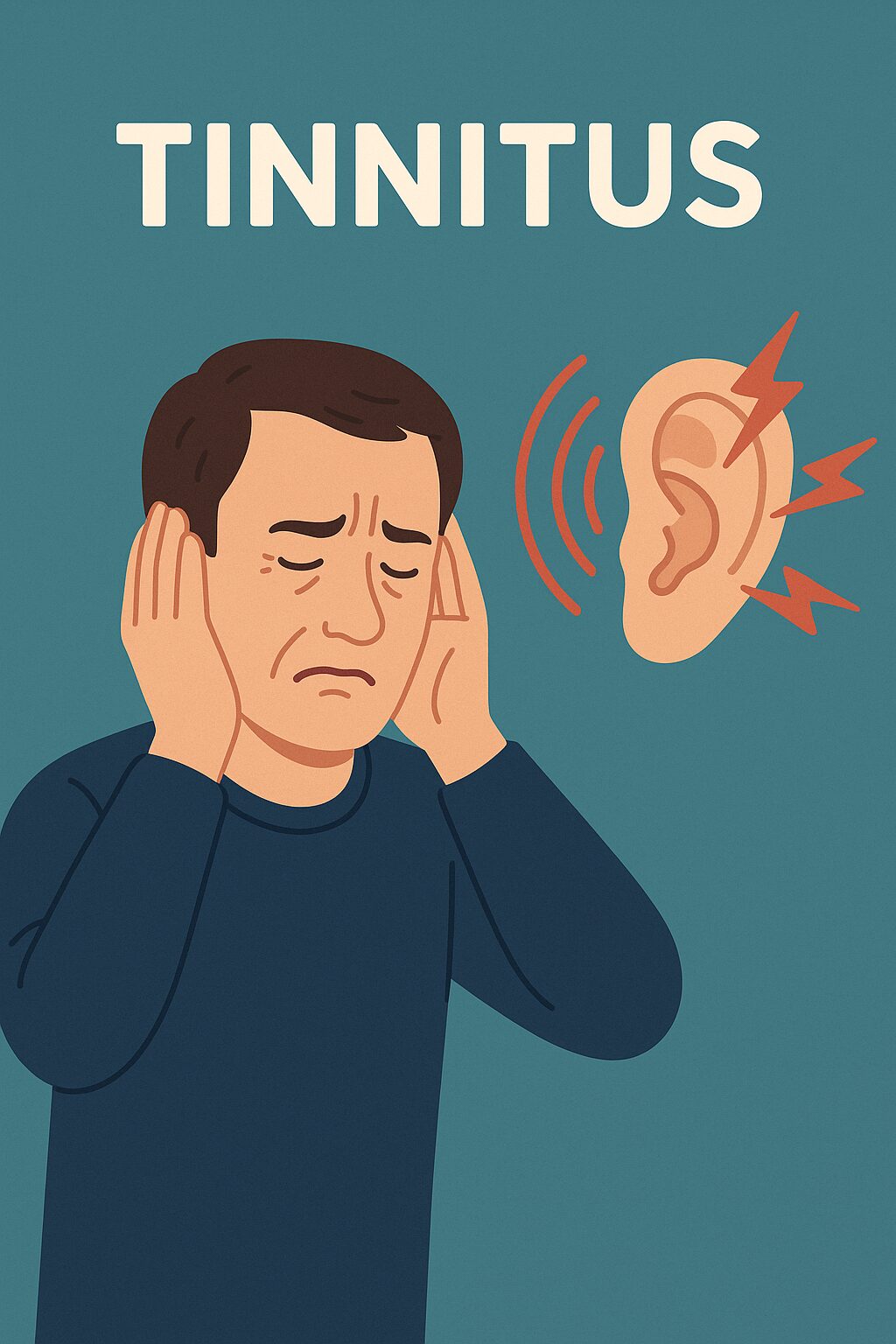Key Takeaways
- Tinnitus masking hearing aids combine traditional amplification with specialized sound therapy to help mask the perception of ringing or buzzing in the ears.
- These specialized devices work by redirecting brain attention away from tinnitus sounds through environmental sound enrichment and customized masking signals.
- Research shows tinnitus masking hearing aids can significantly improve sleep quality, reduce anxiety, and enhance concentration for those suffering from persistent tinnitus.
- Modern devices offer personalized sound therapy options including white noise, nature sounds, and fractal tones that can be tailored to match your specific tinnitus frequency.
- When properly fitted by an audiologist, many users experience relief within 3-4 weeks, though complete habituation may take several months of consistent use.
That persistent ringing in your ears doesn’t have to define your daily life. For millions who suffer from tinnitus, specialized hearing technology offers hope beyond just coping with the noise.
Tinnitus masking hearing aids represent one of the most effective technological interventions available today for managing the persistent phantom sounds that characterize tinnitus. At Northwest Hearing + Tinnitus, we’ve seen firsthand how these specialized devices can transform the quality of life for those battling constant ringing, buzzing, or hissing sounds. These remarkable devices operate on scientific principles that blend audiology expertise with neurological understanding to provide targeted relief.
The Silent Battle: What Tinnitus Really Means for Millions
“Causes of Tinnitus: | Georgetown Ear …” from www.georgetown-ent.com and used with no modifications.
Tinnitus affects approximately 50 million Americans, with about 20 million experiencing chronic tinnitus and 2 million suffering from debilitating symptoms that interfere with daily function. This condition manifests as the perception of sound without an external source—commonly described as ringing, buzzing, hissing, or clicking. For many, these phantom sounds create a constant companion that disrupts concentration, sleep, and emotional well-being.
The condition often accompanies hearing loss, though not always. When auditory hair cells in the inner ear become damaged, they can trigger abnormal neural activity in the auditory pathway. Your brain interprets this aberrant activity as sound, even when no external sound exists. This neurological aspect is crucial to understanding why simply “turning up the volume” with standard hearing aids isn’t always sufficient.
The psychological impact of persistent tinnitus cannot be overstated. Many sufferers report significant anxiety, depression, and sleep disturbances. Constant sound can cause stress, which worsens tinnitus and creates a continuing cycle. Breaking this cycle requires specialized intervention—which is precisely what tinnitus masking hearing aids are designed to accomplish.
Tinnitus Masking Hearing Aids: Your Sound Shield Explained
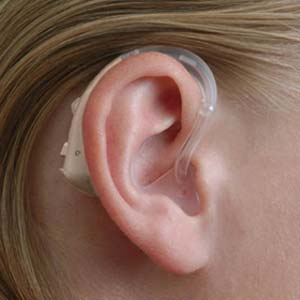
“Tinnitus Masker – Best Tinnitus Maskers …” from www.hearsaywell.com and used with no modifications.
Unlike conventional hearing aids that simply amplify environmental sounds, tinnitus masking hearing aids employ a dual approach. They combine traditional amplification technology with specialized sound generators that produce therapeutic sounds designed to reduce tinnitus perception. That along with our recommended natural supplement source are an amazing pair. This combination addresses both hearing loss (if present) and provides relief from tinnitus symptoms through acoustic therapy.
The fundamental principle behind these devices is acoustic masking—introducing external sounds that partially or completely cover the tinnitus sound. By flooding the auditory system with alternative, controllable sounds, these devices help redirect the brain’s attention away from the internal tinnitus signals. This masking effect can provide immediate relief during use and, in many cases, contributes to longer-term habituation where the brain learns to filter out and ignore the tinnitus sounds.

How These Specialized Hearing Aids Differ From Standard Devices
Standard hearing aids focus primarily on amplifying environmental sounds to compensate for hearing loss. While this amplification can sometimes provide incidental tinnitus relief (by bringing external sounds to the foreground of perception), it’s generally insufficient for those with significant tinnitus symptoms.
Tinnitus masking hearing aids contain additional circuitry specifically designed for tinnitus management. They feature sound generators that produce customizable therapeutic sounds independent of environmental amplification. Modern devices allow for precise control over the type of masking sound, its volume, and even its spectral characteristics to match the individual’s specific tinnitus profile.
Another key difference lies in the programming approach. Tinnitus masking devices undergo specialized fitting procedures that address both hearing loss correction and tinnitus matching. Audiologists must identify the specific characteristics of a patient’s tinnitus—including pitch, volume, and quality—to properly program the masking component. This customization is essential for effective relief and distinguishes these devices from conventional hearing aids.
The Science Behind Sound Masking Technology
The science of sound masking relies on fundamental principles of auditory perception and neural competition. When multiple sounds are present, our brains engage in a complex process of sorting and prioritizing these signals. Tinnitus masking leverages this neural competition by introducing sounds that can effectively compete with tinnitus for attention in the auditory cortex.
Types of Masking Sounds Used in Modern Devices
Modern tinnitus masking hearing aids offer a diverse array of sound options carefully engineered to provide maximum relief. White noise—a consistent sound containing all frequencies at equal intensity—remains a popular choice for its ability to blend with almost any tinnitus profile. Many audiologists now also recommend pink noise or brown noise, which contain more low-frequency energy and may sound more natural to some users. These options create a foundation for basic masking therapy.
Nature sounds have gained significant traction in recent years for their psychological benefits beyond mere acoustic masking. Sounds like gentle rainfall, ocean waves, or forest ambiance can provide effective masking while also promoting relaxation and reducing stress. The rhythmic, predictable patterns in these sounds seem particularly effective at diverting attention away from tinnitus.
The most advanced devices now incorporate fractal tones—mathematically generated sounds with self-similar patterns that avoid repetition and habituation. These tones have shown remarkable effectiveness in both masking and promoting neural reorganization over time. Unlike simple white noise, fractal tones maintain interest for the listener and may accelerate the habituation process that leads to long-term relief.
Inside the Technology: How Masking Actually Works
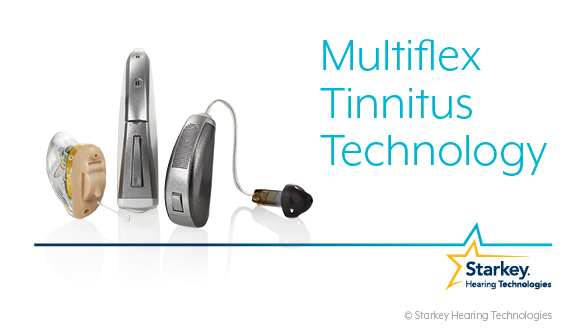
“Multiflex Tinnitus Technology” from www.starkey.com and used with no modifications.
At its core, tinnitus masking leverages the brain’s limited attentional resources. By introducing an external sound that shares frequency characteristics with the tinnitus, the brain’s perception of the unwanted internal sound diminishes. This effect operates through various mechanisms, including direct masking (where external sounds physically cover tinnitus frequencies) and informational masking (where cognitive processing resources are diverted to the external sound).
Modern devices take this basic principle further by incorporating advanced signal processing that dynamically adjusts masking sounds based on environmental conditions. When you enter a quiet room, the masking features automatically intensify to compensate for the reduced environmental sound. Conversely, in noisy environments, the masking component might reduce its output as natural environmental sounds provide sufficient masking.
The Neurological Basis of Tinnitus Perception
Understanding how tinnitus masking works requires insight into the neurological underpinnings of tinnitus itself. Current research indicates that tinnitus stems from maladaptive neuroplasticity—essentially, the brain’s unhelpful rewiring following hearing damage. When sensory input from the cochlea decreases due to hair cell damage, the brain compensates by increasing its sensitivity in affected frequency regions.
This heightened sensitivity manifests as spontaneous neural activity that we perceive as tinnitus. Masking sounds work by engaging these hyperactive neural networks with external stimuli, effectively “resetting” abnormal patterns. With consistent exposure to therapeutic sounds, many users experience a gradual normalization of neural activity, which translates to reduced tinnitus perception even when the device is not in use.
The auditory cortex maintains a tonotopic map—a spatial organization of frequency response—that becomes distorted in tinnitus sufferers. Masking sounds help restore normal activity patterns across this map, potentially inducing beneficial neuroplastic changes over time. This explains why consistent, long-term use often produces better outcomes than intermittent application.
Sound Therapy Mechanisms in Modern Hearing Aids
Contemporary tinnitus masking hearing aids employ multiple therapeutic mechanisms simultaneously. Beyond simple masking, they incorporate principles of sound enrichment, providing a diverse acoustic environment that helps reduce the contrast between silence and tinnitus. This enrichment helps prevent the tinnitus from standing out as a figure against a silent background.
Many devices now utilize notched music therapy, where customized music has specific frequencies (matching the user’s tinnitus) filtered out. This approach aims to reduce neural hyperactivity at tinnitus frequencies through lateral inhibition, effectively “training” the brain to respond less vigorously to these problematic frequencies. The result is often a gradual diminishing of tinnitus perception over months of consistent use.
Customization Features That Target Your Specific Tinnitus
The most effective tinnitus masking hearing aids offer personalized programming based on detailed tinnitus assessments. Audiologists use specialized tests to identify the precise frequency, bandwidth, and intensity of your tinnitus, then program masking sounds that specifically target these characteristics. This customization significantly improves outcomes compared to one-size-fits-all solutions.
Advanced devices allow for multiple masking program options that can be deployed in different listening environments. Users might prefer gentle water sounds for relaxation at home but switch to white noise in noisy office environments. This flexibility ensures optimal relief across various daily scenarios and sound environments.
Automatic Adjustments vs. Manual Controls
Modern tinnitus masking hearing aids strike a balance between automation and user control. Automatic features continuously monitor environmental sounds and adjust masking intensity accordingly, ensuring consistent relief without constant manual adjustments. These systems use sophisticated algorithms to maintain an optimal signal-to-noise ratio between the masking sound, environmental sounds, and perceived tinnitus.
For users who prefer greater control, smartphone apps paired with compatible hearing aids allow on-the-fly adjustments to masking volume, sound type, and balance between environmental amplification and masking sounds. This hybrid approach combines the convenience of automation with the flexibility of personalization, accommodating varying preferences and needs throughout the day.
4 Types of Tinnitus Masking Hearing Aids to Consider
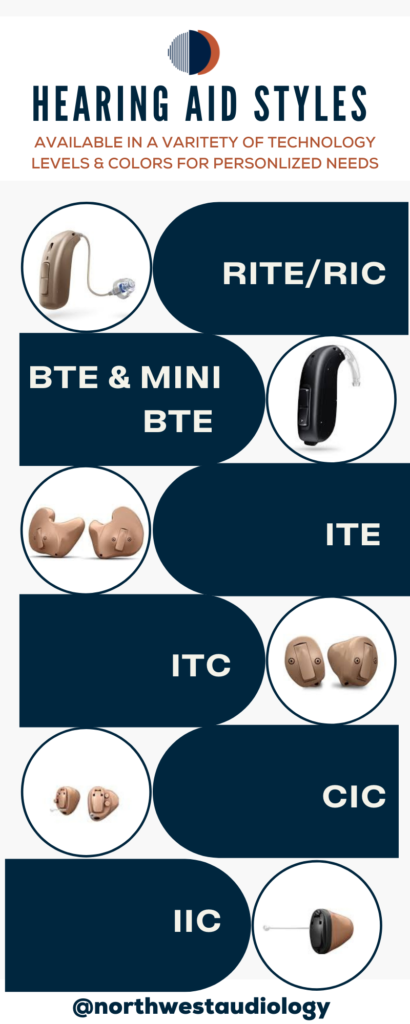
“Hearing + Tinnitus Products – Northwest …” from northwestaudiology.com and used with no modifications.
1. Behind-the-Ear (BTE) Masking Devices
Behind-the-ear tinnitus masking devices remain the most powerful and versatile option for many users. These units house larger batteries and more robust sound processing capabilities, allowing for more sophisticated masking algorithms and longer battery life. The external positioning makes them easier to adjust and maintain, with physical controls that can be manipulated without smartphone dependency.

Modern BTE devices overcome many traditional aesthetic concerns with sleek, discreet designs that tuck neatly behind the ear. Their larger size accommodates dual microphones for superior directional hearing, making them particularly effective in noisy environments where both hearing enhancement and tinnitus masking are crucial. For users with dexterity challenges, BTEs offer the additional advantage of easier handling for battery changes and cleaning.
2. In-the-Ear (ITE) Tinnitus Solutions
In-the-ear tinnitus masking devices offer a compelling balance between discretion and functionality. These custom-molded units fit entirely within the outer portion of the ear canal, making them nearly invisible during social interactions. Despite their smaller size, modern ITE devices pack sophisticated technology including directional microphones and wireless connectivity for streaming masking sounds directly from smartphones or tablets.
The customized fit of ITE devices provides excellent sound quality by leveraging the natural acoustics of your ear. This custom-fit approach often results in more natural sound perception and can improve the effectiveness of masking therapy. For those concerned about appearance while seeking effective tinnitus relief, ITE options represent an excellent middle ground between visibility and performance.
3. Completely-in-Canal (CIC) Options
For maximum discretion, completely-in-canal tinnitus masking hearing aids sit deeply within the ear canal, rendering them virtually invisible to observers. These ultra-compact devices are particularly appealing to first-time users who may feel self-conscious about wearing hearing technology. Despite their minimal size, many CIC models now incorporate effective tinnitus masking capabilities alongside traditional amplification functions.
The deep placement of CIC devices offers acoustic advantages, utilizing the natural resonance of the ear canal to enhance sound quality while requiring less power. However, this compact design does come with trade-offs, including smaller batteries with shorter life spans and potentially fewer features compared to larger models. Users with good manual dexterity who prioritize invisibility often find these limitations acceptable given the cosmetic benefits.
4. Smartphone-Connected Smart Hearing Aids
The latest generation of tinnitus masking technology embraces connectivity through smartphone-compatible smart hearing aids. These sophisticated devices pair seamlessly with dedicated apps that offer unprecedented control over masking sounds, environmental amplification, and other features. Users can adjust settings discreetly through their phones, selecting from libraries of pre-programmed masking sounds or even creating custom sound profiles for different environments.
Beyond basic masking, these connected devices enable advanced features like GPS-based automatic program switching, which can activate specific tinnitus management settings when you enter challenging environments. Many models also offer data logging capabilities that track usage patterns and outcomes, helping audiologists refine your treatment plan based on objective metrics rather than relying solely on subjective reporting.
Real Benefits Backed by Science
The efficacy of tinnitus masking hearing aids is supported by a substantial body of clinical research. Studies consistently demonstrate that properly fitted devices provide significant improvements in quality of life measures for tinnitus sufferers. A 2018 systematic review published in the Journal of American Academy of Audiology found that combination devices (hearing aids with integrated sound generators) produced significant reductions in tinnitus severity scores compared to untreated controls or traditional amplification-only approaches.
Improvement in Sleep Quality
Sleep disruption ranks among the most debilitating consequences of tinnitus, with many sufferers reporting that quiet bedtime environments make tinnitus perception significantly worse. Tinnitus masking hearing aids address this challenge directly by providing consistent, soothing sounds that reduce tinnitus awareness during crucial pre-sleep periods. Many users report falling asleep more easily and experiencing fewer nighttime awakenings after beginning masking therapy.
Research from the University of Michigan’s Tinnitus Clinic found that patients using masking devices at bedtime experienced average sleep latency reductions of 30 minutes compared to untreated baseline measurements. This improved sleep efficiency translates to better daytime functioning, reduced fatigue, and enhanced overall wellness—benefits that extend far beyond simple tinnitus relief.
Reduction in Tinnitus-Related Stress and Anxiety
The psychological burden of persistent tinnitus often manifests as heightened anxiety, irritability, and stress. By reducing the perception of tinnitus throughout the day, masking devices help break the cycle of negative emotional reactions that many sufferers experience. The consistent presence of controlled, pleasant sounds provides a sense of mastery over the condition that reduces feelings of helplessness commonly associated with untreated tinnitus.
Clinical studies utilizing standardized anxiety assessment tools demonstrate significant reductions in anxiety scores after 3-6 months of consistent masking therapy. This psychological relief often occurs even when patients report that they can still occasionally perceive their tinnitus, suggesting that the benefits extend beyond simple acoustic masking to include improved emotional coping mechanisms.
Enhanced Concentration and Focus During Daily Activities
Tinnitus frequently interferes with cognitive functions like concentration, reading comprehension, and task performance. By reducing the cognitive load associated with constant tinnitus awareness, masking devices help restore normal attentional resources. Many users report dramatic improvements in work productivity and ability to engage in mentally demanding tasks after beginning masking therapy.
Objective measures support these subjective reports. A 2019 controlled study published in the International Journal of Audiology found that tinnitus patients demonstrated measurable improvements in selective attention tasks and working memory performance after eight weeks of consistent masking device use. These cognitive benefits remained stable at six-month follow-up assessments, suggesting durable improvements rather than temporary relief.
Long-Term Habituation Effects
Perhaps the most promising benefit of tinnitus masking hearing aids is their potential to promote neural habituation—the brain’s ability to gradually filter out and ignore the tinnitus signal even when masking sounds aren’t present. Through consistent exposure to therapeutic sounds, many users experience a gradual diminishing of tinnitus perception that persists beyond active device use.
This habituation effect typically develops over 6-12 months of regular use and represents a form of beneficial neuroplasticity. The brain essentially “relearns” to properly filter out the internal tinnitus signals that previously commanded attention. Some patients report that after extended use, they experience periods where they’re entirely unaware of their tinnitus even when their devices are removed—a profound relief that speaks to the potential for genuine neural reorganization.
Setting Realistic Expectations: What These Devices Can and Can’t Do

“Tinnitus Treatment – Ottawa Hears” from blog.ottawahears.com and used with no modifications.
While tinnitus masking hearing aids offer significant benefits for many users, establishing realistic expectations remains crucial for satisfaction with treatment outcomes. These devices typically provide substantial relief rather than complete elimination of tinnitus perception. Most users report tinnitus becomes less intrusive and bothersome rather than disappearing entirely. Understanding this distinction helps prevent disappointment and encourages focus on meaningful quality-of-life improvements rather than seeking a “cure.”
Timeline for Noticeable Relief
The timeline for experiencing benefits varies considerably between individuals. Many users report immediate relief during active device use, particularly in quiet environments where tinnitus would otherwise dominate perception. However, deeper neuroplastic changes that contribute to long-term habituation typically develop over longer timeframes—often 3-4 months of consistent use before substantial improvement occurs, with continued progress for up to a year or longer.
This gradual improvement pattern reflects the underlying neurological mechanisms at work. The brain requires sustained exposure to therapeutic sounds to reorganize neural networks and reduce hyperactivity in auditory processing centers. Patience and consistent use remain essential components of successful outcomes, with benefits often continuing to accumulate well beyond the initial adjustment period.

Combining With Other Tinnitus Management Strategies
Tinnitus masking hearing aids typically work best as part of a comprehensive management approach rather than as standalone solutions. Many audiologists recommend complementary strategies including cognitive behavioral therapy (CBT), stress management techniques, and sound enrichment practices beyond device use. This multi-modal approach addresses both the auditory and psychological dimensions of tinnitus, maximizing overall benefit.
Lifestyle changes like exercise, good sleep, and less caffeine or alcohol can reduce tinnitus perception. Stress reduction practices like meditation or relaxation can boost acoustic therapy benefits by easing tinnitus-related factors.
Finding Your Perfect Match: Selection and Fitting Process
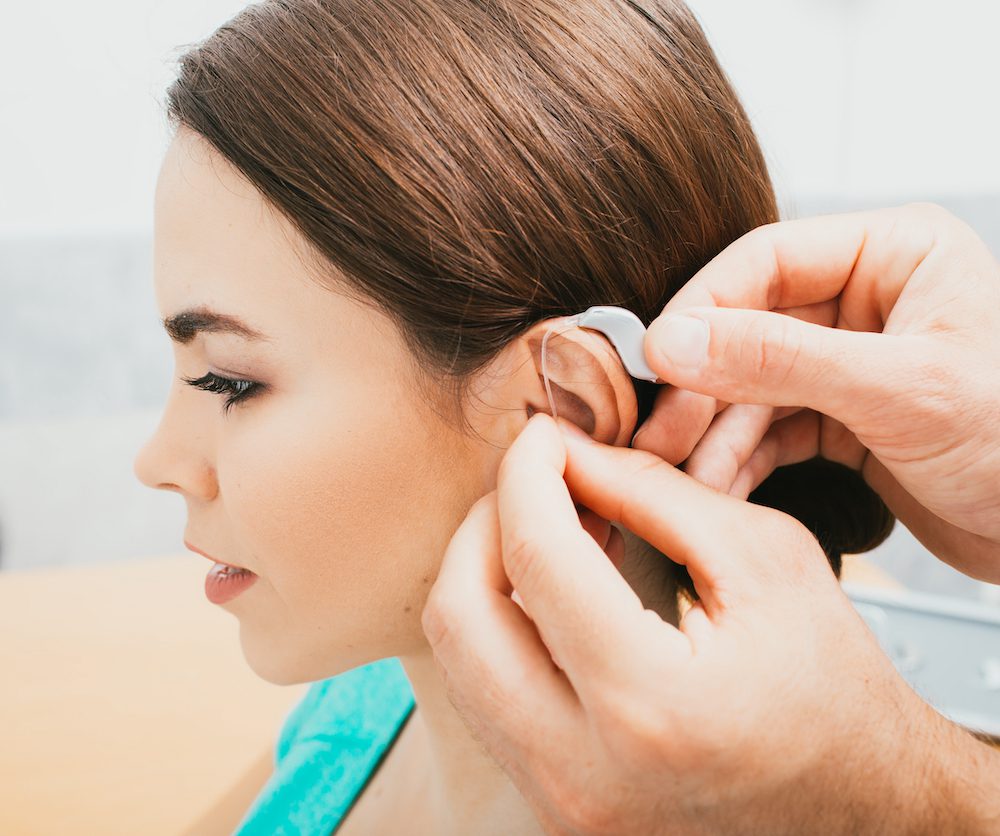
“Tinnitus Treatment …” from alberhearing.com and used with no modifications.
Selecting the optimal tinnitus masking hearing aid requires professional guidance and thorough assessment. The process starts with an audiological evaluation to assess hearing and document tinnitus details like pitch and loudness. These measurements inform device selection and programming decisions, ensuring the masking sounds effectively target your specific tinnitus profile.
Important Evaluations Before Purchase
Before investing in tinnitus masking technology, several key evaluations should be completed. An audiological assessment identifies your hearing needs and whether amplification or masking features are best. Tinnitus matching procedures identify the specific acoustic characteristics of your tinnitus, guiding the selection of appropriate masking sounds.
Many providers also conduct masking effectiveness tests during the evaluation process. These simulations help predict how well different masking approaches might work for your specific tinnitus pattern and can inform technology recommendations. Additionally, questionnaires assessing tinnitus impact on quality of life establish important baseline measures for tracking treatment outcomes.
Working With an Audiologist for Proper Programming
The expertise of a qualified audiologist proves invaluable throughout the fitting and adjustment process. These professionals program devices to precisely match your tinnitus characteristics and hearing needs, often through multiple fine-tuning sessions. They can adjust the spectral shape of masking sounds to maximize effectiveness while maintaining comfort, a nuanced process that requires specialized training and equipment.
Beyond technical programming, audiologists provide crucial counseling about realistic expectations and optimal usage patterns. They help develop personalized strategies for incorporating the devices into your daily routine and maximizing benefit across different listening environments. This ongoing support significantly improves outcomes compared to self-directed approaches to tinnitus management.
Trial Periods and Adjustment Phases
Most providers offer trial periods for tinnitus masking aids, letting you test effectiveness before buying. These trial periods typically last 30-60 days and include multiple adjustment appointments to optimize device programming. In this phase, you and your audiologist adjust sounds and settings for your listening environments.
Cost Considerations and Insurance Coverage

“What does it cost? | Star Legacy Foundation” from starlegacyfoundation.org and used with no modifications.
Tinnitus masking hearing aids represent a significant investment in your auditory health and quality of life. Prices vary considerably based on technology level, feature set, and provider services. Understanding the financial aspects helps set appropriate expectations and facilitates planning for this important health investment.
Price Range for Different Technology Levels
Entry-level tinnitus masking hearing aids typically range from $1,500 to $2,000 per pair, offering basic masking capabilities alongside standard amplification features. These devices usually provide a limited selection of pre-programmed masking sounds and manual controls for adjusting masking intensity. While more affordable, they may lack wireless connectivity options and advanced sound processing capabilities.
Mid-range devices, priced between $2,000 and $3,500 per pair, incorporate more sophisticated signal processing and expanded masking sound libraries. These models offer wireless smartphone control and streaming, giving more flexibility in managing tinnitus daily. Many users find this technology tier offers an optimal balance between functionality and cost.
Premium tinnitus masking hearing aids range from $3,500 to $6,000 per pair, featuring advanced technology like automatic environmental adaptation, artificial intelligence-driven sound processing, and sophisticated connectivity options. These devices often provide the most natural listening experience alongside highly customizable tinnitus management programs. For those with complex listening needs or severe tinnitus, the additional investment may deliver substantial quality-of-life improvements.
Medicare and Private Insurance Options
Insurance coverage for tinnitus masking hearing aids varies significantly between plans and providers. Traditional Medicare (Parts A and B) does not cover hearing aids for tinnitus management, though some Medicare Advantage plans (Part C) may offer partial coverage. Private insurance coverage ranges from no coverage to substantial benefits, with some plans providing allowances of $500-$3,000 toward hearing aid purchases when medically necessary.
Take Back Your Sound Environment: Next Steps for Tinnitus Relief

“Are You a Happy Person? How One Man …” from www.success.com and used with no modifications.
To start, schedule an evaluation with a tinnitus-focused audiologist to explore masking hearing aids. This assessment will establish your hearing profile, document your tinnitus characteristics, and determine which technologies might offer optimal benefit for your specific situation.
Many hearing healthcare providers offer no-cost consultations to discuss treatment options and answer questions about the process. Taking this first step could be the beginning of a significantly improved quality of life with reduced tinnitus awareness and the freedom to focus on what matters most to you. Northwest Hearing + Tinnitus can help you navigate the path to better tinnitus management through cutting-edge technology and compassionate care.
Frequently Asked Questions
- How quickly will I notice improvement with tinnitus masking hearing aids?
- Are there any side effects associated with using masking devices?
- Can I stream music or phone calls through my tinnitus masking hearing aids?
- Will my tinnitus worsen if I remove my hearing aids temporarily?
- How often will I need to replace my tinnitus masking hearing aids?
Can tinnitus masking hearing aids completely cure tinnitus?
No, tinnitus masking hearing aids cannot completely cure tinnitus. These devices provide management and relief rather than elimination of the condition. While many users experience significant reduction in tinnitus awareness and related distress, the underlying neural mechanisms that generate tinnitus remain present. The goal of these devices is to make tinnitus less noticeable and less bothersome, improving quality of life rather than providing a permanent cure. Some users do experience periods where they don’t notice their tinnitus at all, but this represents successful management rather than medical elimination of the condition.
How long should I wear my tinnitus masking hearing aids each day?
For optimal results, most audiologists recommend wearing tinnitus masking hearing aids during all waking hours. Consistent daily use promotes faster habituation and more substantial neuroplastic changes in auditory processing. Particularly during the initial 3-6 months of treatment, consistent exposure to masking sounds helps establish new neural patterns that can reduce tinnitus awareness even during periods when the devices aren’t worn. Your audiologist may recommend specific usage patterns based on your tinnitus characteristics and lifestyle needs.

Will my tinnitus get worse if I remove my hearing aids?
Temporarily removing your tinnitus masking hearing aids will not cause permanent worsening of your tinnitus. You may notice your tinnitus seems more prominent immediately after removing the devices—a phenomenon called the “rebound effect”—but this represents a temporary contrast effect rather than actual intensification of the tinnitus. This perception typically diminishes within minutes as your brain readjusts.
Many masking device users notice less tinnitus even without them, suggesting helpful brain changes The brain essentially learns to better ignore the tinnitus signals over time, a process facilitated by consistent device use.
Patient Experience: “After wearing my masking hearing aids for about 8 months, I noticed something remarkable. I forgot them one weekend during a camping trip, and while I initially panicked, I realized my tinnitus wasn’t dominating my awareness like it used to. It was still there when I paid attention to it, but it wasn’t controlling my thoughts or preventing me from enjoying nature. That’s when I knew the therapy was working beyond just the hours I wear the devices.” – Michael T., 58
Can I use tinnitus masking hearing aids if I don’t have hearing loss?
Yes, tinnitus masking devices are available for individuals without hearing loss. These specialized devices, sometimes called “sound generators” or “tinnitus instruments,” provide masking sounds without amplification. They’re designed specifically for tinnitus sufferers with normal hearing who don’t require traditional hearing aid functionality. Some audiologists may recommend open-fit hearing aids with minimal amplification even for those with clinically normal hearing, as slight enhancement of environmental sounds can provide additional tinnitus relief through enriched acoustic environments.
What’s the difference between tinnitus masking and tinnitus retraining therapy?
Tinnitus masking and tinnitus retraining therapy (TRT) represent different approaches to tinnitus management, though they often employ similar technology. Masking focuses on covering or partially obscuring tinnitus awareness through competing sounds, providing immediate relief during device use. The masking sounds are typically adjusted to a level where they effectively reduce tinnitus perception, potentially completely covering the tinnitus sound.
Tinnitus retraining therapy, developed by Dr. Pawel Jastreboff, combines low-level sound therapy with structured counseling in a more comprehensive neurophysiological approach. TRT uses low-level sound to help the brain treat tinnitus as a neutral, ignorable stimulus. The counseling component addresses emotional and reactive aspects of tinnitus perception.
Many modern tinnitus management programs incorporate elements of both approaches, using masking for immediate relief while working toward long-term habituation through consistent exposure to therapeutic sounds along with our highly recommend natural supplement. Your audiologist can help determine which approach or combination might best address your specific needs.
